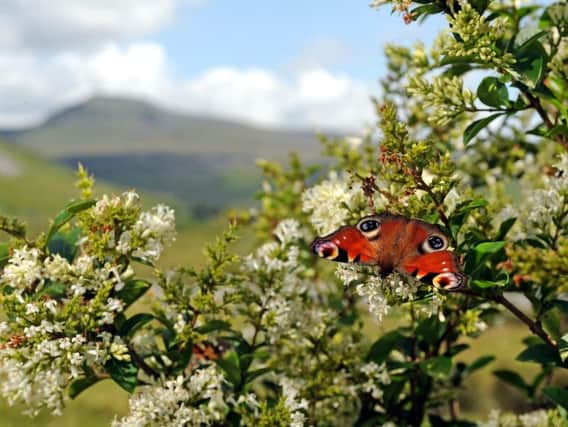Butterfly spotted in Ingleborough in Yorkshire Dales takes its name from colourful peacock feather


The distinctive markings on its colourful wings, designed to startle or confuse predators, make the Peacock one of the most easily recognisable butterflies in gardens across Britain.
But, though they are unmistakable when the upperside of their wings are on show, they aren’t always as obvious from other angles.
Advertisement
Hide AdAdvertisement
Hide AdWhy Baitings Reservoir is a popular spot for a Sunday strollThe underside of their wings are almost black, the dark shade offering camouflage amongst dead leaves and tree trunks when the butterflies are at rest or hibernating.
“In addition to camouflage and large eyes, the butterfly is able to make a hissing sound by rubbing its wings together that is audible to human ears,” the UK Butterflies website, built for a community of enthusiasts, states.
“All in all, this butterfly must appear very threatening to any predator that might come across it.”
These are some of the most unusual Yorkshire buildings you can visit on Heritage Open DaysAlthough the Peacock is a regular visitor to gardens, it also ranges widely through the countryside and can be seen here with Ingleborough, in the background.
Advertisement
Hide AdAdvertisement
Hide AdAnd it is not the only butterfly species that has been spotted in the area around the second highest mountain in the Yorkshire Dales.
As well as the likes of roe deer and bats, the Ingleborough National Nature Reserve, with its varied habitats, is home to the northern brown argus butterfly.
Whilst Peacock caterpillars, black in appearance and covered with short spines and speckled white spots, tend to be seen between mid-May and July, according to the Royal Society for the Protection of Birds, now is one of the prime times to spot the butterfly itself.
An abandoned 17th-century Yorkshire Dales farm with a fascinating history has been given protected statusAdults are most commonly found on sunny days between March and May and again from July to September.
If you keep a look out during the late summer, their eyes may well just catch yours.
Technical details: Shot on a Nikon D3s camera, 24-70mm lens with an exposure of 1/320th @f11, 400ISO.